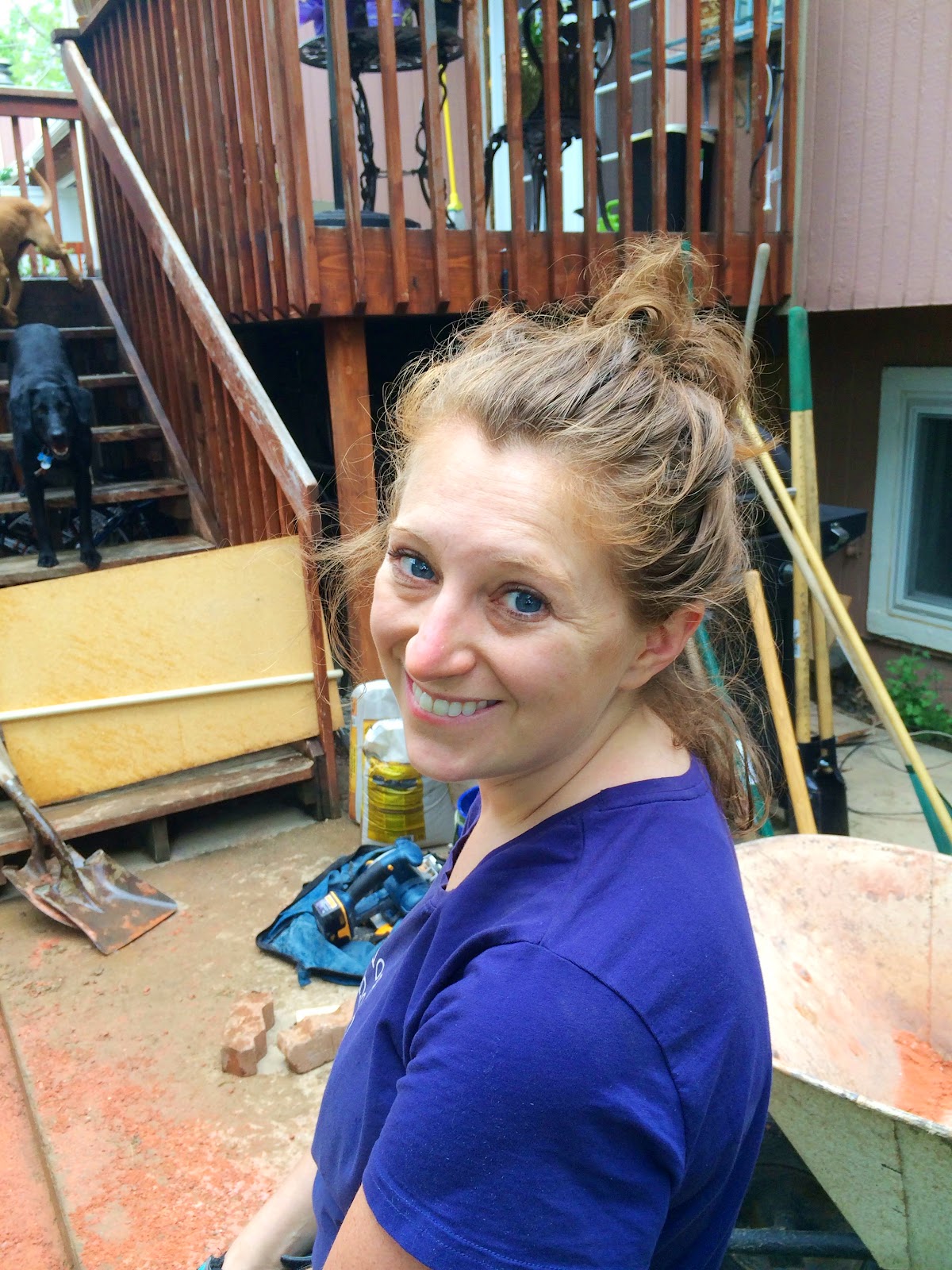So far on our patio journey we have purchased pavers see: Laying a Patio: Craigslist Pavers and made a level perimeter see: Laying a patio: Why do we need a retaining wall?
If you are wondering why is it taking them longer than most...well this is for many reasons and I have come up with the following list of explanations for this endless project.
1. People on pinterest lie about how easy stuff is
2. We have no idea what we are doing so it takes longer to figure out
3. We are working with a very unleveled surface
4. The soil is clay based so hard to move wet or dry
5. We only have time to work on this every other weekend (if that)
6. Our adorable puppy distracts us and we cannot help it
7. We need to eat every 2 hours so we have to take breaks for that
8. rain
Ok so enough with the excuses, here we are in the next phase - Digging and Screeding
Step 3: Dig
Now it is time to dig. Our goal is to avoid having to take dirt out and have to dispose of it. Moving dirt is most decidedly my least favorite job. Guess I will never be a miner or a 7 dwarf. I am pathetic with a shovel. My upper body just wasn't made to farm. I liked using the tiller much better. I probably wouldn't have survived moving west and homesteading. I did the best I could to help but digging is no job for a dainty lady like myself. Our first plan of action was to move the dirt from the top of the slope to the bottom. The fence pickets helped us eyeball how far we needed to go. We eventually got a a place of satisfaction. (Even though there was some arguing, a few breaks, a nap, and some rain in between the beginning and end of this process).
Step 4: Screed (red breeze and sand)
During this process I learned a new word - Screed
screed
skrēd/
noun
- 1.a long speech or piece of writing, typically one regarded as tedious.
- 2.a leveled layer of material (e.g., cement) applied to a floor or other surface.
verb
- 1.level (a floor or layer of concrete) with a straight edge using a back and forth motion while moving across the surface.
In this case we were using the verb form of screed. In order to screed we had to make screed board. Imagine you have a box full of dirt but the dirt is overflowing. You want to make the dirt level so you take a piece of wood and drag it across the top removing the excess - well that is screeding. Only we had to screed outside of the box. We used 16 foot 2X4's to create a frame then cut a board to fit inside so that we could pull out excess dirt. Then we used a hand tamp and tamped down all the loose dirt.
 Now it is time for Red Breeze. This is a sandy gravel that packs down really well. It is used for driveways and walkways. You can get it in other colors. Ours is just red. The breeze will help our pavers stay put and not sink down. We poured the breeze into a section then set up the screed and smoothed out the breeze until it was level. Then we tamped down the breeze so it would be come a solid surface.
Now it is time for Red Breeze. This is a sandy gravel that packs down really well. It is used for driveways and walkways. You can get it in other colors. Ours is just red. The breeze will help our pavers stay put and not sink down. We poured the breeze into a section then set up the screed and smoothed out the breeze until it was level. Then we tamped down the breeze so it would be come a solid surface.

Did you think we were done? Nope we have a layer of sand to add to the mix. Sand is the final topping to this seven layer patio. The sand will raise the level of patio so the pavers will be in line with the concrete slab, the top of the retaining wall, and the top of the pickets. Once we pour and screed a section of sand we will be able to lay the pavers. We bought Quickrete sand from home depot. We estimated we needed 50 bags. And each bag weighs about 50 pounds. Yup I carried about 3/4 of those bags all by myself.
Check out that screed job. We got better as we went and each screeded section looked better and better. We are not ready to lay pavers! But this post is long enough and I need a break - you'll have to wait to see the final push. What step are we on now?













No comments:
Post a Comment